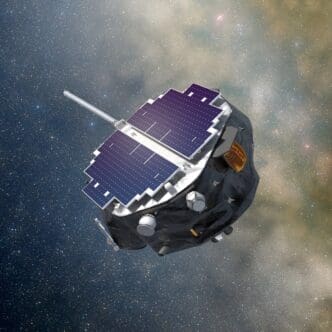NASA has announced a postponement in the launch schedule of three significant missions intended to study the sun, citing complications with the primary payload.
The agency has delayed the launch of its Interstellar Mapping and Acceleration Probe (IMAP) on Falcon 9, shifting the timeline from a potential spring 2025 date to no earlier than September 2025. This adjustment allows additional time for final preparations of the IMAP flight systems. Prior communications from NASA’s Kennedy Space Center suggested a launch in late 2025 without specifying further details.
IMAP is tasked with operating from the Earth-sun L-1 Lagrange point, located 1.5 million kilometers from Earth, aimed at studying the heliosphere and the solar wind. The heliosphere acts as a magnetic shield, protecting the solar system from interstellar particles. Joe Westlake, director of NASA’s heliophysics division, emphasized the mission’s twofold purpose during a session at the annual American Geophysical Union meeting. Not only will IMAP explore the solar environment, but it will also contribute to safeguarding Earth’s technological infrastructure by monitoring solar weather. Despite the recent announcement, there was no prior indication of a delay during Westlake’s presentation.
The IMAP mission’s timeline has experienced multiple delays; initially scheduled for a 2024 launch, it has been pushed back several times since then. In November 2023, the launch was postponed from February 2025 to April or May 2025 following a critical review to address risks and challenges associated with system integration and testing.
The deferred launch also impacts two other missions set to fly as rideshare payloads. The Carruthers Geocorona Observatory, formerly known as GLIDE, aims to study the Earth’s exosphere from the Earth-sun L-1 point. Meanwhile, the Space Weather Follow-On (SWFO) L-1 mission by the National Oceanic and Atmospheric Administration (NOAA) will observe solar weather for operational purposes, such as space weather forecasting.
Joe Westlake highlighted the strategic use of rideshare missions during the town hall meeting, noting NASA’s intention to maximize scientific opportunities with each launch. This particular launch, originally awarded to SpaceX in 2020, included not only two rideshares but also a solar sail mission named Solar Cruiser, which was terminated in 2023 due to technical challenges. Another payload, the Lunar Trailblazer lunar orbiter, was reassigned in 2022 to avoid delay, securing a launch slot on the IM-2 lunar lander mission by Intuitive Machines, now expected no earlier than February 2025.
The postponement of NASA’s IMAP and associated missions underscores the complexities involved in space exploration and the agency’s commitment to ensuring mission readiness before launch. As these missions prepare for their rescheduled timelines, the scientific community and those interested in heliophysics await the insights these studies will offer about our sun and solar environment.
Source: Spacenews







